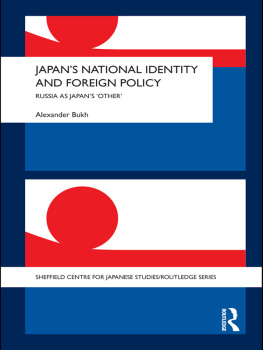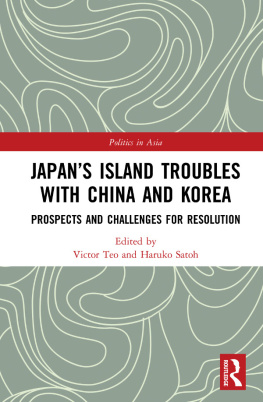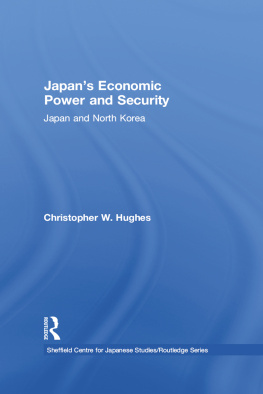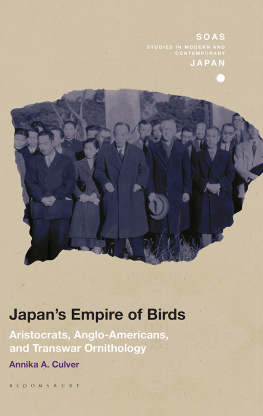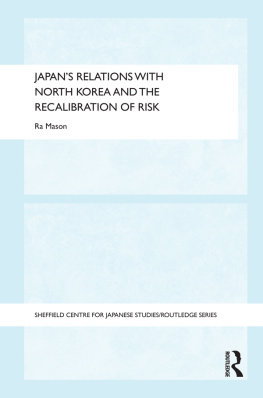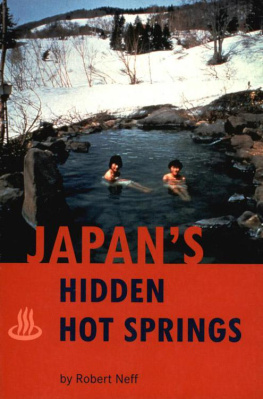Advance Praise for Japans Secret War
Japans Secret War is still spellbinding. It is intriguing and disturbingRobert Wilcox deserves high praise for his meticulous research.
Historynet.com
One of the last secrets to come out of World War II.
Stanley Sandler, author of World War II in the Pacific: An Encyclopedia
An outstanding historical study of Japans nuclear efforts! Robert Wilcox has documented the final answer to those who might suggest that the US had some racist motive to drop two atomic bombs on Japan. They, in fact, planned to drop one on us! My hat is off to Robert for this outstanding book. Required reading if you want the truth .
Robert A. Clark, President, International Association of Military Technology Historians
A PERMUTED PRESS BOOK
ISBN: 978-1-68261-896-7
ISBN (eBook): 978-1-68261-897-4
Japans Secret War:
How Japans Race to Build its Own Atomic Bomb Provided the Groundwork for North Koreas Nuclear Program
Third Edition: Revised and Updated
2019 by Robert K. Wilcox
All Rights Reserved
Map Illustration: Dwight Rider
Cover Photo: View of the vast housing for industrial workers at coastal Hungnam (Konan), now in North Korea, where Japanese atomic bomb work is believed to have occurred. National Archives, with help from Specialist Kaitlyn Crain Enriquez; photo 127-GK-234H-A157345, taken by U.S. Marines during the Korean War.
No part of this book may be reproduced, stored in a retrieval system, or transmitted by any means without the written permission of the author and publisher.
Permuted Press, LLC
New York Nashville
permutedpress.com
Published in the United States of America
There is a little-known, virtually hidden reason why a closed-off, impoverished country like North Korea, ruled by an almost cartoonish but brutal dictator, threatens the United States, the most powerful nation on earth. That reason is that North Koreas nuclear program, which today targets the United States, was built upon a foundation laid by Japans World War II attempt to make an atomic bomb. The attempt, in many ways, was as complex, cunning, and far-fetched as Americas own Manhattan Project, but its effort was never publicly recognized as such.
Though Japan, which had the scientific know-how to make the bomb but lacked in-country resources, lost the nuclear race in the war, it came closermuch closerto making an atomic bomb than has been generally acknowledged. Japans search for resources spanned most of Asia, as did its multiple and varied secret atomic projects. Korea and China, both occupied by the Japanese, played significant roles in the Japanese nuclear programs, housing secret projects, providing resources, and aiding or expanding upon the pilot programs in the Japanese homeland. Uranium and other fissionable ores were mined and processed throughout Asia and then sent back to Japan or its occupied areas. The effort involved huge numbers of local civilians, Japanese soldiers, and scientists. Apparently, even Allied POWs were forced into laboring on the projects. Separation plants in World War II Korea and China, as well as in Japan proper, refined and prepared fissionable materials for nuclear bombs. Japan produced substantial uranium, the essential element for a bomband not just in a matchbook sized amount, as disparagingly reported years ago. Japan may even have tested atomic devices, reportedly off Korea and in Mongolia.
As the former editor of the Japan Times Weekly , Yoichi Shimatsu, has written: Japan was no stranger to atomic energy. During the Second World War, the Allies and the Axis competed for an exotic new energy sourceuranium. While the Manhattan Project was secretly crafting the atomic bomb in New Mexico, Japan opened uranium mines in Konan, North Korea, mines which are the current source of Pyongyangs nuclear energy program.
As Japan collapsed, North Korea inherited Japans entire atomic infrastructure in its own backyardKonan to the Japanese, Hungnam and Hamhung in Koreanincluding that same uranium source, underground installations, key mountain sites, and its immense electrical network, without which atomic work could not be conducted. North Koreas early scientists received during the war on-site training from the Japanese. Indeed, the man dubbed the father of North Koreas nuclear program, Yi Sung-Ki, was educated as a chemical engineer in Japan. He worked on Japans wartime nuclear effort, and following the Korean War, in 1953, was named head of North Koreas first nuclear research program at Hungnam, the same site believed to have been where the Japanese tested a nuclear device.
When defeat in World War II was imminent, the Japanese destroyed most of the evidence of their wartime atomic programs, both in Japan proper and in the occupied countries. They burned documents and destroyed atomic plants, plans, and materials. In the case of what was in Asia, destruction was mostly to keep information and materiel from the invading Soviets who, learning about it from their extensive and formidable spy network, wanted it for their own fledgling atomic program. It was also to keep secret the fact that they, the Japanese, had been working on the same type of device that killed hundreds of thousands of their own citizens in Hiroshima and Nagasaki. In addition, war-crime trials were looming. The Japanese leadership was aware of what was happening to German war criminals at the Nuremberg Trials. American officials, having conquered Japan and needing an ally as a bulwark against the Soviets, conspired to keep Japans atomic effort a secret. The Allies captured the remaining Japanese stockpile of uranium and other fissionable fuels, all of which was designated top secret. Thus, historians found scarce or no information about the Japanese program. Those wanting the Japanese to be regarded solely as victims of the bomb welcomed the coverup. Official accounts, guarding the withheld secrets, reinforced the argument that America was culpable as the only nation to have used the bomb. The truth was buriedin some cases for legitimate security reasons, and in others, solely for political purposes.






